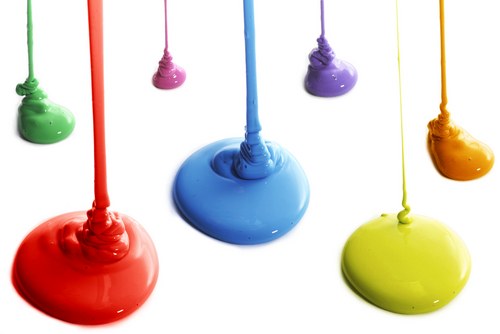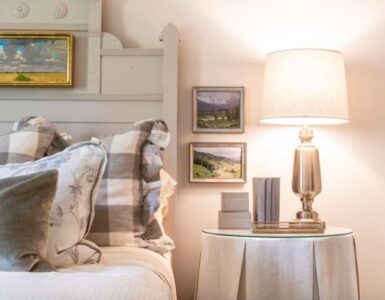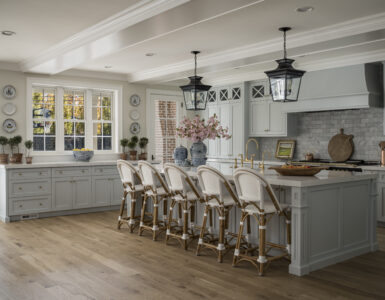Jennifer Chipman with The Quaint Home Interior Design, shares 10 tips for picking the perfect paint color.
1. Start with Inspiration: Whether it is a fabulous piece of art, your favorite accessory, an accent color from a rug or simply a swatch of fabric…these can all be great places to find inspiration for your walls. Some of my most favorite color schemes started from something small that my client fell in love with.
2. Get in the Mood: Think about the use of the room and the emotion that you want to evoke. Color has a lot of effect on us psychologically so use it to your advantage! Bright colors stimulate, warm colors increase energy and can even increase your appetite, neutral earth tones create a sense of comfort and security, and monochromatic color schemes evoke tranquility. Keep in mind that color is subjective and the initial response to a color may change over time. For instance, while many cool tones such as blues, grays and greens can give a sense of calm, they can also promote sadness. Intense colors such as red, orange and yellow can invigorate at first sight but can also create feelings of unrest.
3. Shed Some Light On It: Does the room have lots of natural light during the day? Is the area mainly lit by artificial light? The lighting of a room is a very important factor in color selection. Rooms with southern or western exposure will naturally have a warmer light. Northern or Eastern exposure casts a cool light. You may want to choose a paint color with the opposite effect to balance the light in the room. ALWAYS choose the paint color while you are in the room…and be sure to look at the paint chip in both natural daylight and artificial light.
4. Understand Undertones: Cool vs. Warm….the easiest way to explain this is to draw a line straight down the color wheel from the yellow-green mark to the red-violet mark. The colors on the left are warm and the colors on the right are cool. Warm colors can have a yellow, red, or orange undertone. Cool colors can have a blue or green undertone. If you are having a hard time seeing the undertone of a paint color try looking at it against a plain white sheet of paper…is there more red or more blue in the color? Undertones are important to look for and understand because this is what causes most of the paint mistakes. If you are not careful to notice you may end up with a mauve wall instead of beige!
5. The Shocking Truth: Intensity is the term we use to describe the brilliance of a color. The more pure the color is the more intense it will be. Paint color appears brighter on the wall than in the can or the paint chip so be careful about the level of intensity you choose. I have had many clients call me with a paint mistake that involves the color being too strong when it goes up on the wall. Even when you are seeking a bright color you may need to pick a paint that has a more “muddy” or less pure appearance on the paint sample to avoid this costly mistake.
6. Look towards the Finish Line: Paint is available in several finish options or sheens ranging from flat to high gloss. Lower sheen paints such as matte or eggshell are great at hiding imperfections and flaws but not so great for cleaning and durability. Areas that are high use and need frequent scrubbing are better suited for semi-gloss or a high-gloss paint. Because these paints reflect more light, they will make any wall imperfection more noticeable as well. The change in sheen can also have an effect on the appearance of the color. High sheen paints can make paint colors appear deeper, while flat paints can have the opposite effect, making colors appear lighter. This is actually a great way to use sheen to your advantage when using a monochromatic color scheme.
7. Room with a View: When considering paint for one area of your house take a step back and see how it will work with adjacent areas. Approach it like a composition: as you walk through one room you are going to see a piece of another room through it. Think about the flow of color from one space to the next.
8. Things Are Looking Up: Painting the ceiling can actually make the room appear larger by pushing the walls out visually. Painting the ceiling the same color as the walls came help blend the wall and ceiling border. Try painting low ceilings in a lighter shade to help add height. To add warmth to a room with high ceilings try painting the ceilings two to three shades darker than the walls. Rooms with decorative ceiling finish work are an excellent opportunity to add a bold accent color.
9. Take A Test Drive: Once you have narrowed down your options the best way to make sure you have the right color is to test it. Many paint stores are now offering small tester size paint cans. These are inexpensive and a great way to boost your confidence and confirm your choice. I always recommend that my clients paint the color(s) onto a white poster board or a large area of wall that is well lit. Leave the paint up for a couple of days so that you can view it during the daytime as well as at night.
10. Be Color Courageous: Now that you have found your perfect color you can add pattern and interest by using your creativity. Areas that are in extra need of personality can benefit from a strong accent wall, a bold stripe pattern, or for added depth a textured finish. There are many new specialty paints available to experiment with including chalkboard paint, suede finishes, metallic paints and glazes. Be bold and have fun!
Check out Jennifer’s website, www.thequainthome.com for more paint recommendations, including a list of her favorite fail proof paint colors. You can also schedule an appointment with Jennifer for interior design advice. Contact her through her website or by email, jennifer@thequainthome.com, or by phone #801-651-3532.
Jennifer has worked in the design business for 15 years. She provides a flexible full scale design service that fits the needs, budgets, and busy lifestyles of her clients. Her services range from a simple color consultation to whole house interior design projects and everything in between.















Add comment